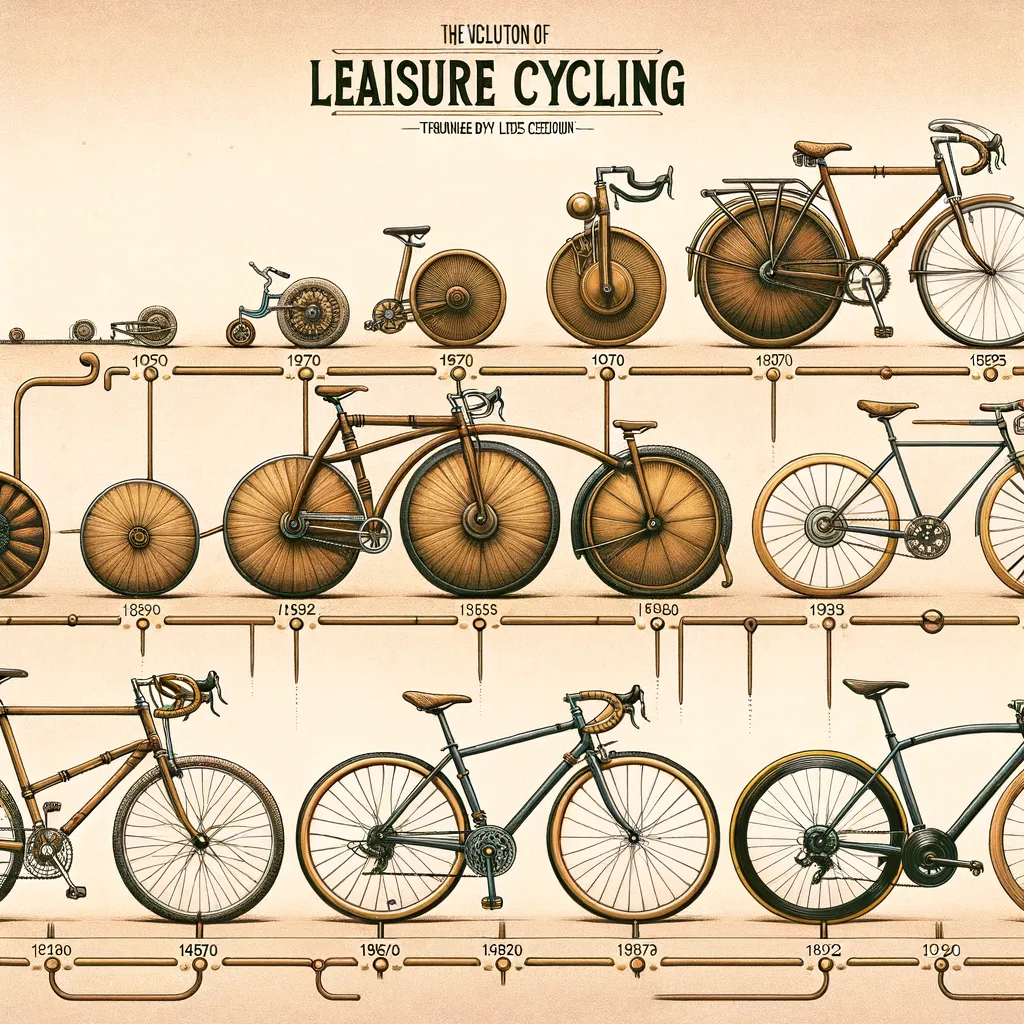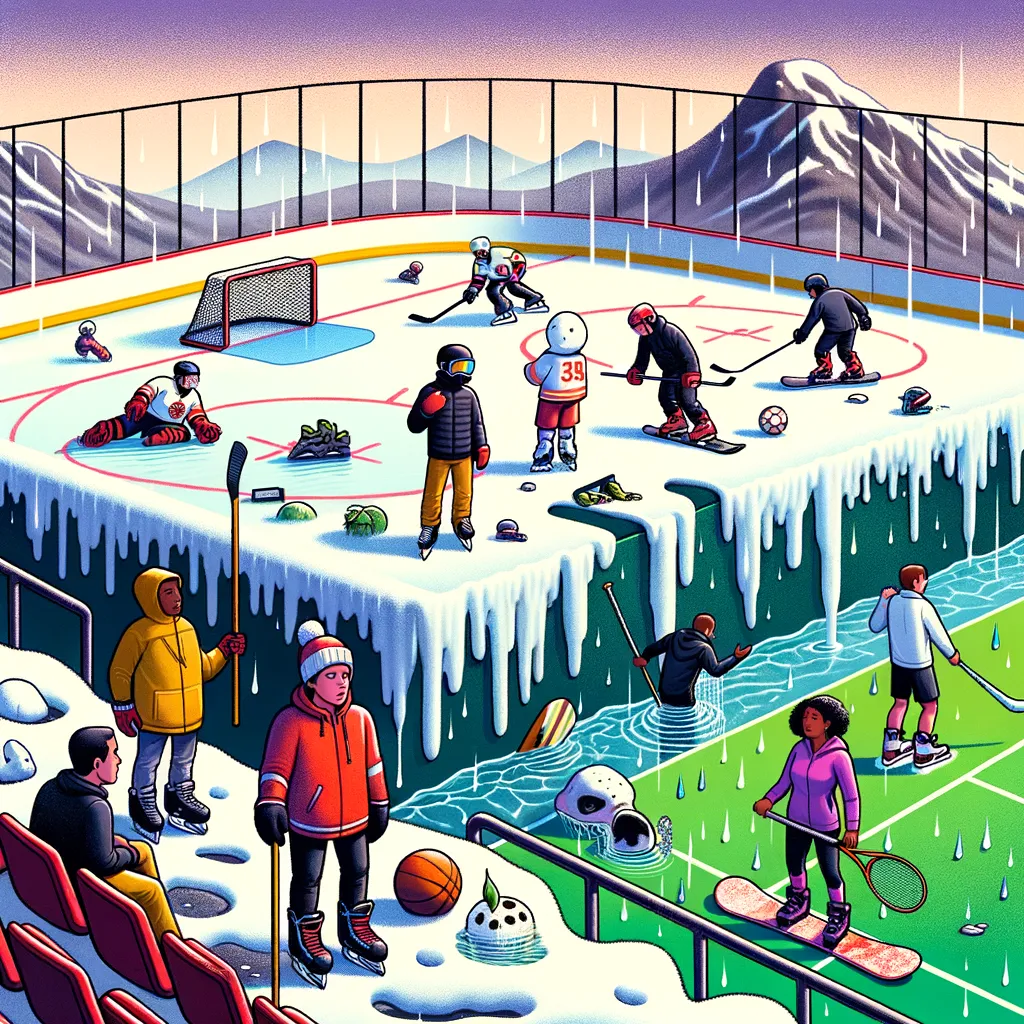The Joyful Pedal: Exploring the History of Leisure Cycling and Its Modern Influence on Bike Design
Welcome to our journey through the enchanting lanes of leisure cycling’s past and its profound impact on contemporary bicycle design! Cycling has become a beloved activity worldwide, not just as a mode of transportation but as a gateway to adventure, relaxation, and family fun. Whether it’s a serene solo ride through the countryside or an energetic jaob with friends, cycling offers something for everyone. In this comprehensive guide, we aim to pedal through the history of leisure cycling, unveiling how it has shaped the bicycles we know and love today. For those avid explorers and family adventurers, delve into resources like Outdoors and Outdoor Activities to gear up for your next ride.
The Origins of Leisure Cycling
The story of leisure cycling begins in the 19th century, a time when bicycles were a novel invention. Initially seen as a practical means of transportation, it wasn’t long before the sheer joy and freedom offered by cycling caught the public’s imagination. The 1890s marked a “golden age” for cycling, buoyed by technological advancements that made bikes more comfortable and accessible to the masses. It was during this era that cycling began to be seen not just as a means to an end, but as an enjoyable activity in its own right.
The Evolution of Bike Design
As the popularity of leisure cycling grew, so did the demand for bikes that catered to the recreational cyclist. The early days of bulky, inefficient designs gave way to more refined, lightweight models. Innovations such as pneumatic tires, multi-speed gears, and improved braking systems revolutionized the cycling experience, making riding more pleasurable and accessible for everyone.
The 20th century witnessed further transformations in bike design, influenced heavily by the leisure cycling boom. Hybrid bikes, offering the perfect blend of road and mountain bike features, emerged to cater to the casual cyclist’s desire for versatility. Meanwhile, the introduction of electric bikes brought cycling within reach of an even broader audience, breaking down barriers of fitness and distance.
The design changes in bicycles reflect an ongoing journey toward comfort, efficiency, and inclusivity, inspired by the diverse needs and desires of leisure cyclists. From the high-wheelers of the 19th century to today’s sleek e-bikes, each evolution in bike design carries with it stories of innovation driven by the joy of cycling.
Leisure Cycling Today: A Renaissance
In recent years, we’ve witnessed a renaissance in leisure cycling, with more people than ever taking to the roads, trails, and bike paths for enjoyment and exercise. The rise of cycling clubs, community rides, and family-friendly cycling events underscores the enduring appeal of leisure cycling as a source of joy, community, and physical well-being.
This resurgence has further influenced bike design, with manufacturers keenly focusing on creating bikes that meet the varied needs of today’s leisure cyclists. From custom-fit bikes designed for comfort and performance to innovative gear and accessories that enhance the cycling experience, the spirit of leisure cycling continues to shape the future of bike design.
As we look back on the storied past of leisure cycling, it’s clear that the simple pleasure of a bike ride has come a long way. What began as a novel means of transport has evolved into a beloved pastime, inspiring generations of cyclists to explore the world on two wheels. The history of leisure cycling is not just about the bikes themselves, but about the communities, innovations, and adventures that cycling has fostered over the years.
In the following sections, we’ll dive deeper into the technological advancements that have revolutionized leisure cycling, the cultural shifts that have elevated its status, and the cyclists who have left an indelible mark on this timeless activity. Join us as we continue to explore how leisure cycling has shaped, and been shaped by, the world around us.
Family Cycling through Time: Understanding The History of Leisure Cycling and Its Modern Influence on Bike Design
Cycling with family is more than just pedaling together; it’s creating memories on the go and experiencing the joy of exploration on two wheels. As we delve into the fascinating journey of leisure cycling and its impact on bicycle design, it’s crucial for parents to grasp how these evolutions have made cycling more enjoyable, safer, and accessible for all ages. This guide will unfold the transformative timeline of leisure cycling, enriching your knowledge and preparation for your family’s next cycling adventure.
Five Essential Insights for Parents into the History of Leisure Cycling and Its Impact on Bike Design
Before we pedal further into the heart of leisure cycling’s rich history and its influence on bike design, here are five pivotal insights parents should be aware of:
- Evolution of Safety Features: From the invention of pneumatic tires to the integration of modern braking systems, bicycle design has always been influenced by the pursuit of safety. Understanding these technological milestones can guide parents in selecting bikes that ensure a safer ride for their children.
- The Rise of Children’s Bikes: The leisure cycling boom led to the creation of bikes designed specifically for children. Knowing the history behind kid-friendly features, such as adjustable seat height and simplified gear systems, can help parents choose the right bike that grows with their child.
- Inclusivity in Cycling: The introduction of electric bikes and the development of hybrid models have made cycling accessible to a wider audience, including families with varying levels of fitness. This inclusivity opens up new avenues for family outings, enabling everyone to participate and enjoy the ride together.
- Importance of Ergonomic Design: As bikes evolved, so did the focus on ergonomic design to enhance comfort on long rides. Parents can look for bikes designed with ergonomics in mind, reducing the risk of discomfort or injury during family cycling trips.
- Customization and Accessories: Today’s bicycle design allows for extensive customization, from adjustable components to a vast array of accessories. This flexibility ensures that parents can tailor bikes to fit their family’s unique needs, enhancing both functionality and enjoyment.
Diving Deeper into the Technological Advancements
Exploring the technological advancements in the history of leisure cycling not only offers a glimpse into the past but also highlights the future’s potential. Innovations like the shift from steel to aluminum frames for a lighter ride, and the advent of carbon fiber for strength and durability, showcase the ever-evolving nature of bike design. For families, understanding these advancements means appreciating how much easier and more enjoyable cycling has become, enabling them to make informed decisions about their cycling gear.
Cultural Shifts Elevating Leisure Cycling
The resurgence of cycling as a leisure activity isn’t just about technological improvements; it’s also deeply rooted in cultural shifts. The recognition of cycling’s health benefits, alongside a growing environmental consciousness, has propelled the popularity of family cycling. Parents and their children are increasingly turning to bicycles as a means of eco-friendly transportation and a way to spend quality time together, all while staying active.
Influential Cyclists Who Have Shaped Leisure Cycling
In the annals of leisure cycling’s history, certain individuals stand out for their contributions to popularizing and advancing the sport. From pioneers of long-distance rides to advocates of cycling as a family-inclusive activity, these figures inspire parents and children alike to explore the world on two wheels. Their stories are not just about athletic achievements but about fostering a global cycling community that welcomes riders of all ages and abilities.
As the journey through the story of leisure cycling concludes, it’s evident that the evolution of bike design is a testament to the enduring appeal and transformative power of cycling as a leisure activity. For parents looking to embark on cycling adventures with their children, the history of leisure cycling offers valuable lessons in safety, inclusivity, and the joy of shared experiences. As you gear up for your next family ride, remember, the wheels you pedal on carry the legacy of centuries of innovation and the collective joy of countless families before you.
Embracing the history of leisure cycling and understanding its impact on bike design equips parents with the knowledge to make the best choices for their family’s cycling endeavors. With every pedal stroke, families are not just riding bikes; they’re riding through history, shaping future memories on the foundation of past innovations.
Disclaimer
The articles available via our website provide general information only and we strongly urge readers to exercise caution and conduct their own thorough research and fact-checking. The information presented should not be taken as absolute truth, and, to the maximum extent permitted by law, we will not be held liable for any inaccuracies or errors in the content. It is essential for individuals to independently verify and validate the information before making any decisions or taking any actions based on the articles.





